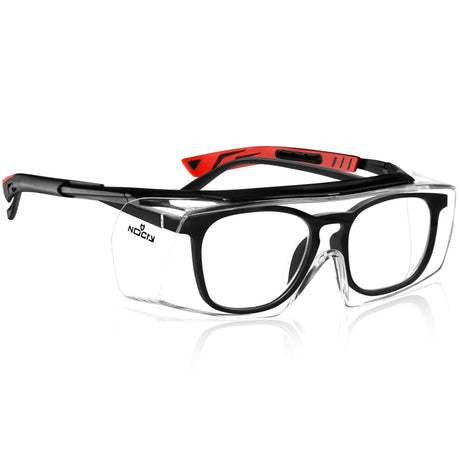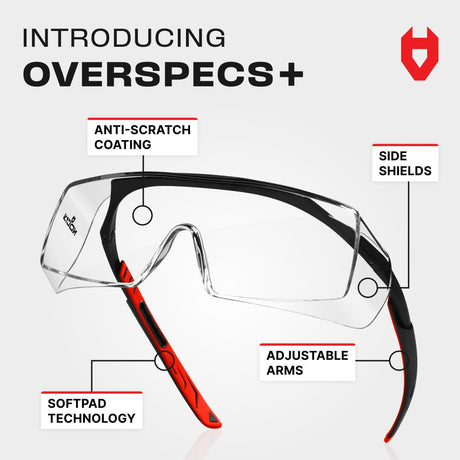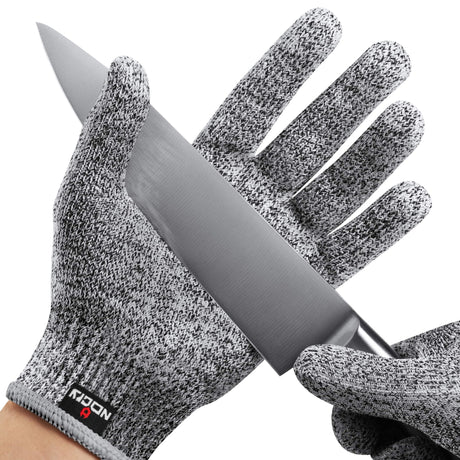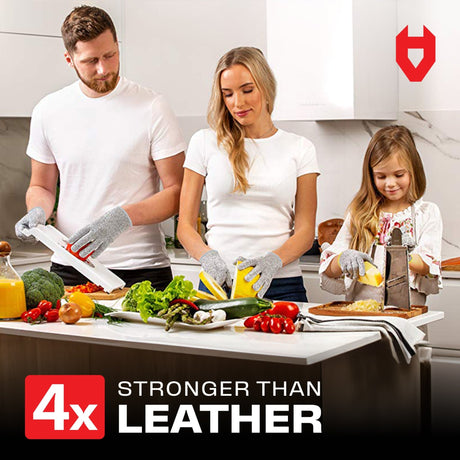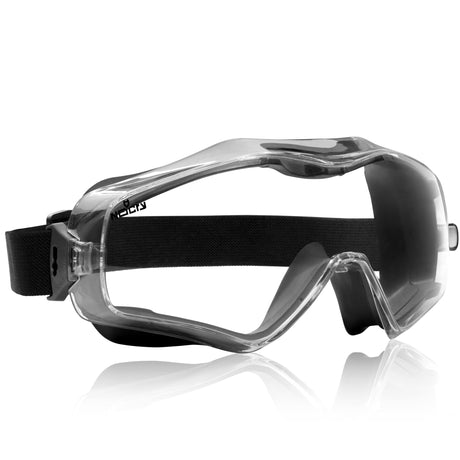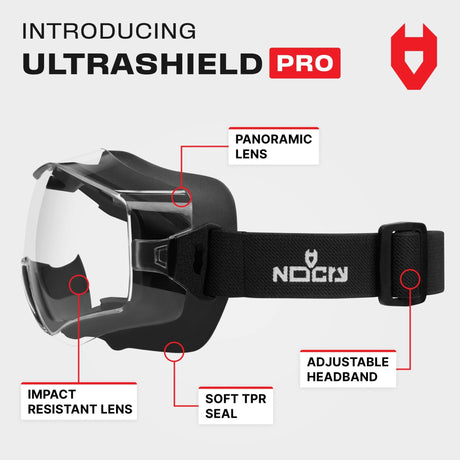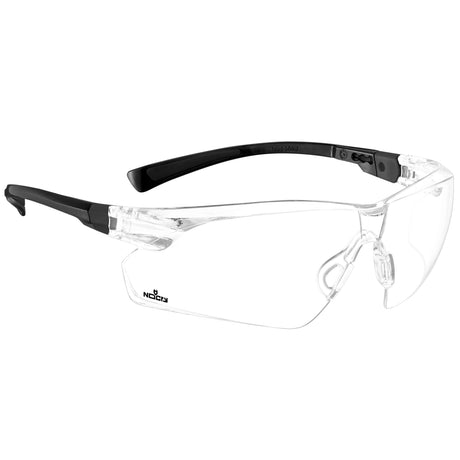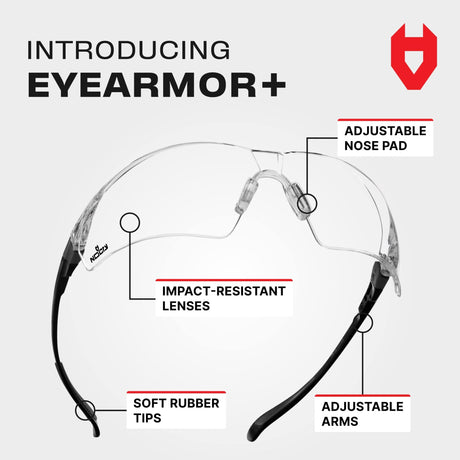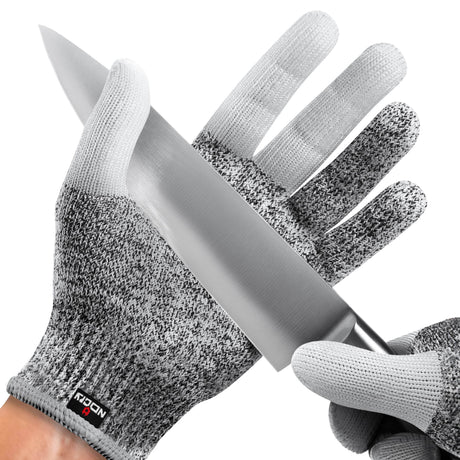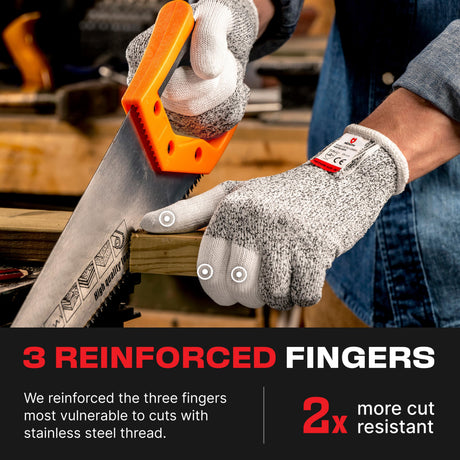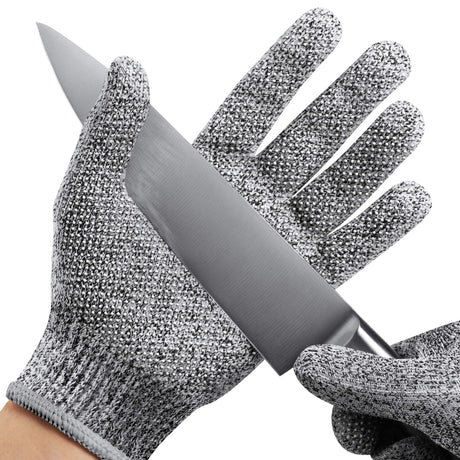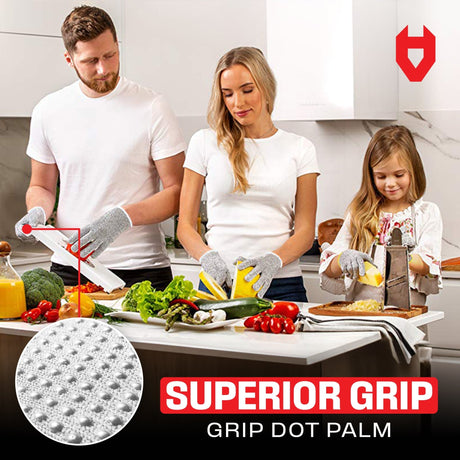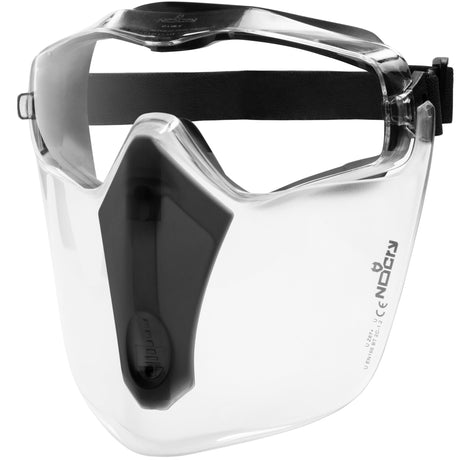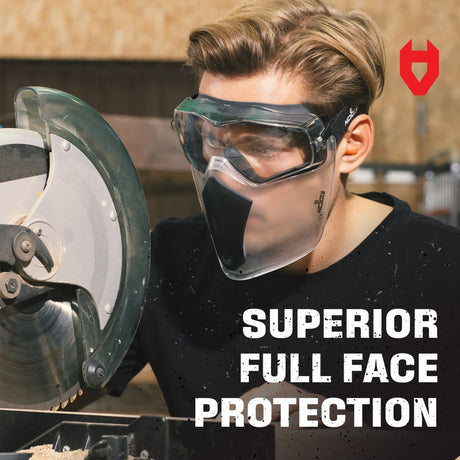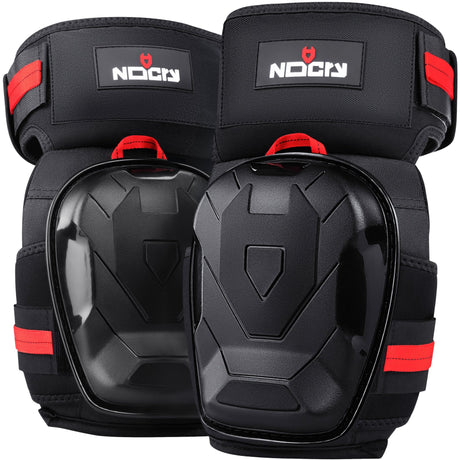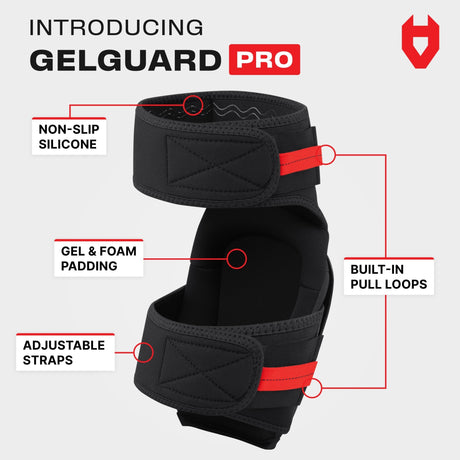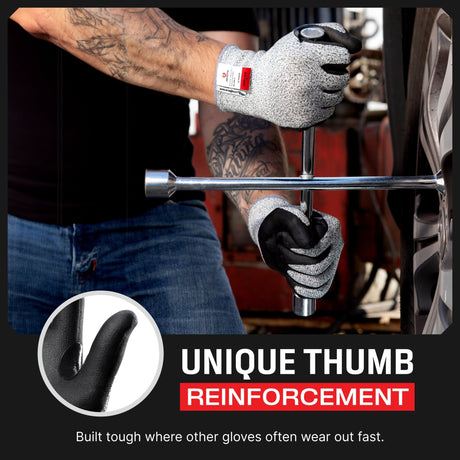Eager to green up your thumbs and finally get to work establishing your garden? Then you need the right garden tool kit at your disposal. If you want to get the most out of your backyard soil there are a number of essential garden tools that will make your life a lot easier, along with allowing your work to be as productive as possible.
We’ve put together this list of essential gardening tools for beginners and veterans alike, giving you the names of garden tools along with what they’re useful for. From digging and scooping to trimming and pruning, this gardening tools list should tell you everything you need to know before making a trip to the hardware store.
1. Gloves
When it comes to essential garden tools, a good pair of work gloves is the first thing you should purchase for your arsenal. Your hands are up against it when gardening, whether wrapped around the handle of a spade, pulling out weeds, or handling thorny vines, which is why a good layer of protection is vital to a fun and successful time when gardening.
Leather work gloves are the most common when it comes to working in the garden, but anything thick and sturdy enough will work just fine. Things like thorns and friction are the clearer hazards to your hands when working in the garden, but even contact with seemingly innocuous plants can lead to irritation and reactions, so make sure to get gloves sorted first!
2. Secateurs / Pruning Shears
Whether you call them secateurs or pruning shears, this bladed, handheld, and manual device definitely fits into the pantheon of must-have gardening tools. Pruning is the process of selectively removing stems, branches, and twigs from plants, such as flower bushes or smaller trees, to improve their structure and tidy them up aesthetically.
From rose bushes to fruit-bearing plants, pruning is an essential aspect of running a stunning and healthy garden, adding to the visual appeal and helping to use space more effectively. Make sure you get a good pair of shears that are comfortable in your hand, with nice sharp blades that you can maintain easily for the best, long-lasting usage.
3. Watering Hose
Most people have a garden hose somewhere attached to their home, but a specific hose for watering plants is useful when it comes to caring for more established plants. There are a number of great garden hoses on the market, along with attachments like spray nozzles that can be used to convert a conventional hose into a more garden-specific tool.
You wanna make sure to get a hose with enough length to make its way all around the garden, while an adjustable nozzle or tip is also handy as it means you could alter the reach and spread of the water itself for the sake of different plants. You can’t just place your watering reliance on rainfall, but you can definitely hang some hopes on a hose!
4. Watering Can
This is likely one of the basic gardening tools that you remember from your childhood, but this backyard classic isn’t just for kids. If you have a smaller garden space then a watering can provide you with everything you need to keep your whole garden hydrated with nothing more than your kitchen sink and a little bit of elbow grease.
A watering can isn’t just for smaller gardens, but also for smaller young plants and seedlings. It’s easy to overwater and drown newly established or establishing plants, which is why a watering can with a sprinkling tip is essential for running a healthy garden. With the presence of a tool to water carefully, you can expect the highest success rate with your budding herbs and flowers.
5. Spade
Spades are absolutely essential when it comes to digging and planting in the garden. The brother of the shovel, spades are made with flatter, wider blades to facilitate clean and effective cutting into the soil. You can use a shovel if you prefer, especially for the movement of loose soil, but a spade suits things like transplanting and breaking new ground more effectively.
If you need to transfer a plant to a different part of the garden, a spade is ideal for digging that new hole, along with getting that plant out of the ground from the roots. You want to make sure you choose an option that suits you in terms of size and handle length, along with a sharp sturdy blade, and a handle that you feel comfortable with.
6. Garden Fork
If the spade is the brother of the shovel, the garden fork is like their long-lost cousin, being a comparable tool all the way up until the literal forked end. Garden forks are useful for digging in similar ways to spades, offering a more concentrated area of pressure for breaking into harder masses of soil and stone, great for loosening up and aerating garden surfaces.
Garden forks are available in three main shapes, each with its own benefits. Forks with a slight curve are better for scooping and turning masses of compost and mulch, while straighter tined forks are suited for breaking into harder areas of ground. Also, we have square-tined forks, which are considered the strongest, sturdiest form of a garden fork.
7. Hand Trowel
In this family that we’ve built within these scooping and digging types of garden tools, the hand trowel is one of two little siblings, used as a handheld spade/shovel for use with smaller plants and flowers. Hand trowels are especially useful when it comes to weeding the garden, along with transplanting smaller plants and herbs.
If you need to shift more soil at once, choose a trowel with a wider blade, while if your main purpose is going to be weeding then a more narrow, sharper trowel blade will suit you. As a rule for all scooping and digging tools, you’ll have a better experience with an ergonomic handle and a stainless steel head.
8. Hand Fork
The final member of the digging family on this garden tools list is, of course, the hand fork. Hand forks of course can be used as garden forks are, just for smaller-scale tasks and gardening challenges. They’re especially useful for breaking and crumbling up the soil for your impending flowerbed or herb habitat into compost for planting herbs and flowers.
Much like all the other digging and scooping tools that we’ve listed thus far, there are variations on the hand fork in terms of shape and materials, so it’s important to pick the right one for you and your needs. A comfortable ergonomic handle goes a long way, as does the presence of stainless steel tines for the best possible lasting power.
9. Hedge Trimmer Shears
A necessary tool in the arsenal of any budding landscaper, a good pair of hedge trimmer shears are the go-to weapon of choice when it comes to maintaining hedges and bushes. With two strong, sharp blades, this manual form of trimmer shears can be used to tidy up hedges, or even to shape them specifically for decorative effect.
Power hedge trimmers are also available, but they’re not as useful for precision trimming and shape-forming. You can also use hedge trimmer shears as a tool for lawn maintenance, allowing you to cut back areas that were hard to reach with your lawnmower. As with any tool, choose good pair with plenty of ergonomic value to make work as easy as possible on your body.
10. Rake
When it comes to things every gardener needs, people will often forget about the importance of keeping your outdoor space tidy and efficient. A rake is totally essential when it comes to maintaining a garden, providing you with a tool for clearing away debris and biological mess that finds its way onto your lawn, be it branches, leaves, seeds, or anything else that falls off a tree.
Rakes also come greatly in handy when it comes to loosening up soil surfaces that you intend to plant seeds into. There are plenty of different rakes and even forms of rake available on the market, so it’s worth having a browse to figure out which will suit your needs the best. Whether you get one for tidying or loosening soil, no garden is complete without at least one rake.
11. Wheelbarrow
When setting up a new garden and continuing to maintain it, you can expect to deal with a lot of waste product, whether it’s soil, trimmings, or weeds. That’s why every gardener should keep a good, sturdy wheelbarrow within arm's length, to ensure that the massive quantities of organic material that they’ll inevitably have to move don’t take too heavy of a toll on your back.
Attempting to carry everything by hand or in your arms is time-consuming and dangerous. The process can cause injuries and bad backs, along with potentially ruining your clothes and covering you with scratches or irritation. Pair your spade, hedge trimming shears, and pruning tools with a wheelbarrow so trips to the compost pile can be easier than ever before.
12. Goggles
Along with all these functional tools for enacting your gardening desires, safety gear is equally essential when running a productive, fruitful (if you’ll pardon the pun) garden space. What good are a bunch of beautiful flowers, herbs, and plants if your eyes aren’t working? Getting yourself a reliable pair of safety goggles will offer you valuable protection in various gardening contexts.
There are plenty of things that can get into your eyes while gardening, with debris from cutting and pruning being a common hazard. Similarly, soil, pollen, and other dusty things can easily make their way to your face, potentially damaging your eyes. A good pair of clear goggles should be enough, but a full forestry helmet might be what you need depending on your focus.
13. Hoe
Hoes are a great tool when it comes to preparing a garden for an impending planting session, with different styles of hoe suiting different gardens. They’re generally made with the same purpose in mind, however, with the primary function of a hoe being skimming weeds off the top of the soil, so you have a better, tidier base layer to plant your seeds and young plants into.
You can also use a thicker, sturdier hoe for pre-digging trenches around the garden, which can be greatly beneficial when it comes to setting up a vegetable garden. When using any hoe, you want a long, comfortable handle with plenty of reach, so you can cover plenty of ground during usage. Whether weeding or turning soil, some sort of hoe is essential for a great garden.
14. Knee Pads
While many of the items on this list are tools used for gardening directly, the support tools are just as essential for making sure that your gardening experience is as enjoyable and easy on your body as possible. Knee pads are the perfect example of this, being something that many would probably neglect when ticking off their gardening tools checklist.
A good pair of foam or fabric knee pads are a great support item for gardening, especially for tasks like close-up weeding and pruning which can require you to kneel down for extended periods of time. After a while, kneeling takes a toll on your joints and indeed on your trousers, so get some good pads to keep both these things feeling happier and healthier.
What Now?
Now that you have a good idea of some of the most essential gardening tools that you can keep on hand in your arsenal, it’s time to start building your own personal kit. Of course, not every tool in this list will be essential for your garden space or gardening ambitions, but by following our guidance you should have a good foundation to work from.
At NoCry, we stock a variety of DIY and hobbyist tools, including great knee pads, safety goggles, and leather work gloves, among others. Check out our range here and browse our website for more blogs on tools, DIY, and more.


